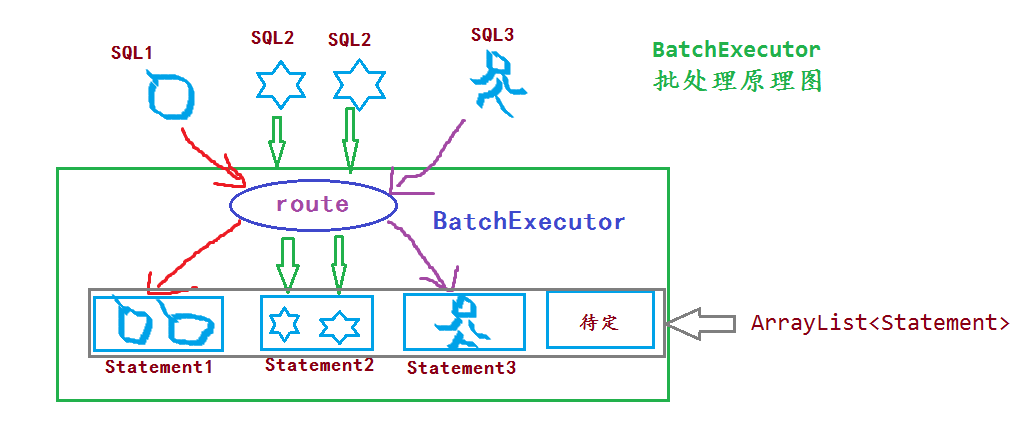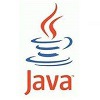Mybatis 背后的强者Executor
Mybatis 背后的强者Executor
当我们读取完配置文件,将我们的Mybatis配置成我们想要的要的样子之后,我们就要使用他对数据库进行一系列操作(增删改查)。而SqlSession这个看似无所不能的操作达人,其实是找了代练的。SqlSession将一切数据库具体操作委托给背后的强者,今天要就让我们揭开Executor这个强者的面纱。
Executor 类结构图
可以看出强者的家族都是一脉相承的,让我们逐一认识一下这一家人。
public interface Executor {
ResultHandler NO_RESULT_HANDLER = null;
int update(MappedStatement ms, Object parameter) throws SQLException;
<E> List<E> query(MappedStatement ms, Object parameter, RowBounds rowBounds, ResultHandler resultHandler, CacheKey cacheKey, BoundSql boundSql) throws SQLException;
<E> List<E> query(MappedStatement ms, Object parameter, RowBounds rowBounds, ResultHandler resultHandler) throws SQLException;
<E> Cursor<E> queryCursor(MappedStatement ms, Object parameter, RowBounds rowBounds) throws SQLException;
List<BatchResult> flushStatements() throws SQLException;
void commit(boolean required) throws SQLException;
void rollback(boolean required) throws SQLException;
CacheKey createCacheKey(MappedStatement ms, Object parameterObject, RowBounds rowBounds, BoundSql boundSql);
boolean isCached(MappedStatement ms, CacheKey key);
void clearLocalCache();
void deferLoad(MappedStatement ms, MetaObject resultObject, String property, CacheKey key, Class<?> targetType);
Transaction getTransaction();
void close(boolean forceRollback);
boolean isClosed();
void setExecutorWrapper(Executor executor);
}
Executor接口就好似一个武林秘籍,涵盖了包括查询,更新,事务操作,缓存构建的一系列描述,根据方法名我们可略知一二。得此秘籍者两人却分别走了两条不同的修行之路。
桃李天下的 BaseExecutor
BaseExecutor 作为一个合格的老师,为学生铺好了练习的场地,处理了诸如数据库连接,数据库关闭,事务回滚,事务提交等一系列繁杂的事情。学生只需专心于以下4技能的修炼即可.关键 时刻,学生出拳就能了事。
protected abstract int doUpdate(MappedStatement ms, Object parameter)
throws SQLException;
protected abstract List<BatchResult> doFlushStatements(boolean isRollback)
throws SQLException;
protected abstract <E> List<E> doQuery(MappedStatement ms, Object parameter, RowBounds rowBounds, ResultHandler resultHandler, BoundSql boundSql)
throws SQLException;
protected abstract <E> Cursor<E> doQueryCursor(MappedStatement ms, Object parameter, RowBounds rowBounds, BoundSql boundSql)
throws SQLException;
接下来让我们分别看看,他的四大弟子都有什么本事吧。
SimpleExecutor : 应对简单处理,每执行一次update或select,就开启一个Statement对象,用完立刻关闭Statement对象。(可以是Statement或PrepareStatement对象),俗称打完就跑,有始有终。
BatchExecutor:善于批量处理执行update(没有select,JDBC批处理不支持select),将所有sql都添加到批处理中(addBatch()),等待统一执行(executeBatch()),它缓存了多个Statement对象,每个Statement对象都是addBatch()完毕后,等待逐一执行executeBatch()批处理的;
ReuseExecutor :一旦出拳,不叫停不会停。执行update或select,以sql作为key查找Statement对象,存在就使用,不存在就创建,用完后,不关闭Statement对象,而是放置于Map<String, Statement>内,供下一次使用。
ClosedExecutor :最不学无术的一个 ,是ResultLoaderMap的一个内部类,只返回一些标志位。
听完他们的本事,是不是很想知道他们具体怎么成为高徒的呢,秀肌肉到的是时候到了。
1、SimpleExecutor
@Override
public int doUpdate(MappedStatement ms, Object parameter) throws SQLException {
Statement stmt = null;
try {
Configuration configuration = ms.getConfiguration();
StatementHandler handler = configuration.newStatementHandler(this, ms, parameter, RowBounds.DEFAULT, null, null);
stmt = prepareStatement(handler, ms.getStatementLog());
return handler.update(stmt);
} finally {
closeStatement(stmt);
}
}
@Override
public <E> List<E> doQuery(MappedStatement ms, Object parameter, RowBounds rowBounds, ResultHandler resultHandler, BoundSql boundSql) throws SQLException {
Statement stmt = null;
try {
Configuration configuration = ms.getConfiguration();
StatementHandler handler = configuration.newStatementHandler(wrapper, ms, parameter, rowBounds, resultHandler, boundSql);
stmt = prepareStatement(handler, ms.getStatementLog());
return handler.query(stmt, resultHandler);
} finally {
closeStatement(stmt);
}
}
@Override
protected <E> Cursor<E> doQueryCursor(MappedStatement ms, Object parameter, RowBounds rowBounds, BoundSql boundSql) throws SQLException {
Configuration configuration = ms.getConfiguration();
StatementHandler handler = configuration.newStatementHandler(wrapper, ms, parameter, rowBounds, null, boundSql);
Statement stmt = prepareStatement(handler, ms.getStatementLog());
Cursor<E> cursor = handler.queryCursor(stmt);
stmt.closeOnCompletion();
return cursor;
}
@Override
public List<BatchResult> doFlushStatements(boolean isRollback) {
return Collections.emptyList();
}
SimpleExecutor 较为简单,无论是query 还是 update statement随建随关。基本步骤就是获取配置,创建相应的StatementHandler,实例化Statement ,使用StatementHandler执行数据库操作。
2、ReuseExecutor
private final Map<String, Statement> statementMap = new HashMap<>();
@Override
public int doUpdate(MappedStatement ms, Object parameter) throws SQLException {
Configuration configuration = ms.getConfiguration();
StatementHandler handler = configuration.newStatementHandler(this, ms, parameter, RowBounds.DEFAULT, null, null);
Statement stmt = prepareStatement(handler, ms.getStatementLog());
return handler.update(stmt);
}
@Override
public <E> List<E> doQuery(MappedStatement ms, Object parameter, RowBounds rowBounds, ResultHandler resultHandler, BoundSql boundSql) throws SQLException {
Configuration configuration = ms.getConfiguration();
StatementHandler handler = configuration.newStatementHandler(wrapper, ms, parameter, rowBounds, resultHandler, boundSql);
Statement stmt = prepareStatement(handler, ms.getStatementLog());
return handler.query(stmt, resultHandler);
}
@Override
protected <E> Cursor<E> doQueryCursor(MappedStatement ms, Object parameter, RowBounds rowBounds, BoundSql boundSql) throws SQLException {
Configuration configuration = ms.getConfiguration();
StatementHandler handler = configuration.newStatementHandler(wrapper, ms, parameter, rowBounds, null, boundSql);
Statement stmt = prepareStatement(handler, ms.getStatementLog());
return handler.queryCursor(stmt);
}
ReuseExecutor 和 SimpleExecutor 的操作步骤基本相似,最大的区别在于前者维护者一个statementMap 用于记录并没有销毁的statement,当相同的sql语句被执行时,会使用同一个已经创建好的statement,如果sql第一次执行,那么就创建一个新的statement,并放入statementMap中。
private Statement prepareStatement(StatementHandler handler, Log statementLog) throws SQLException {
Statement stmt;
BoundSql boundSql = handler.getBoundSql();
String sql = boundSql.getSql();
//有则直接使用
if (hasStatementFor(sql)) {
//sql 作为 key,statement 作为value
stmt = getStatement(sql);
applyTransactionTimeout(stmt);
} else { // 没有则创建新的statement
Connection connection = getConnection(statementLog);
stmt = handler.prepare(connection, transaction.getTimeout());
putStatement(sql, stmt);
}
handler.parameterize(stmt);
return stmt;
}
当然ReuseExecutor 中的statement 不可能一直不关闭,这就需要我们在恰当的时候,通过调用doFlushStatements方法手动对其进行关闭。
@Override
public List<BatchResult> doFlushStatements(boolean isRollback) {
for (Statement stmt : statementMap.values()) {
closeStatement(stmt);
}
statementMap.clear();
return Collections.emptyList();
}
3、BatchExecutor
BatchExecutor 是几个徒弟之中拳法最为厉害的,他可以进行批量操作,让我们看看他是如何以一敌百的。
让我们先来看看BatchExecutor 是处理每一条sql的。

BatchExecutor 在执行批量更新时,根据sql语句创建Statement桶,相同的sql使用相同statement,并将所有的statement添加到statementList中。
在执行批量更新的过程中,并不执行sql,只是拼接不同的statement。直至commit时,拿到statementList逐一进行sql执行。
//维护一个Statement列表 用于缓存拼接好的statement
private final List<Statement> statementList = new ArrayList<>();
//维护一个Result 列表,用于记录处理结果
private final List<BatchResult> batchResultList = new ArrayList<>();
//当前保存的sql,也就是上一次执行的sql
private String currentSql;
////当前保存的MappedStatement,也就是上一次执行的MappedStatement
private MappedStatement currentStatement;
@Override
public int doUpdate(MappedStatement ms, Object parameterObject) throws SQLException {
final Configuration configuration = ms.getConfiguration();
final StatementHandler handler = configuration.newStatementHandler(this, ms, parameterObject, RowBounds.DEFAULT, null, null);
final BoundSql boundSql = handler.getBoundSql();
//要执行的sql
final String sql = boundSql.getSql();
final Statement stmt;
//如果和上次执行sql相同,同时MappedStatement也必须相同,取上次执行statement,并传入此次参数
if (sql.equals(currentSql) && ms.equals(currentStatement)) {
int last = statementList.size() - 1;
stmt = statementList.get(last);
applyTransactionTimeout(stmt);
handler.parameterize(stmt);//fix Issues 322
BatchResult batchResult = batchResultList.get(last);
batchResult.addParameterObject(parameterObject);
} else {
//如果和上次执行sql不同,创建新的statement
Connection connection = getConnection(ms.getStatementLog());
stmt = handler.prepare(connection, transaction.getTimeout());
handler.parameterize(stmt); //fix Issues 322
currentSql = sql;
currentStatement = ms;
statementList.add(stmt);
batchResultList.add(new BatchResult(ms, sql, parameterObject));
}
//在handler内部执行addBatch()方法
handler.batch(stmt);
return BATCH_UPDATE_RETURN_VALUE;
}
需要注意:
sql.equals(currentSql)和statementList.get(last),充分说明了其有序逻辑:AABB,将生成2个Statement对象;AABBAA,将生成3个Statement对象,而不是2个。因为,只要sql有变化,将导致生成新的Statement对象。也就是说,现在执行的sql,只和上一次执行的sql进行对比,是否相同。如果相同使用上一个statement,如果不同再次创建新的statement。
那么什么时候执行sql 呢?
答案是:在执行commit的时候。在执行commit、rollback等动作前,都将会执行flushStatements()方法,将Statement对象逐一关闭。
看看BatchExecutor .doFlushStatements方法。
@Override
public List<BatchResult> doFlushStatements(boolean isRollback) throws SQLException {
try {
List<BatchResult> results = new ArrayList<>();
if (isRollback) {
return Collections.emptyList();
}
//遍历statementList,执行sql
for (int i = 0, n = statementList.size(); i < n; i++) {
Statement stmt = statementList.get(i);
applyTransactionTimeout(stmt);
BatchResult batchResult = batchResultList.get(i);
try {
// 执行sql
batchResult.setUpdateCounts(stmt.executeBatch());
MappedStatement ms = batchResult.getMappedStatement();
List<Object> parameterObjects = batchResult.getParameterObjects();
KeyGenerator keyGenerator = ms.getKeyGenerator();
if (Jdbc3KeyGenerator.class.equals(keyGenerator.getClass())) {
Jdbc3KeyGenerator jdbc3KeyGenerator = (Jdbc3KeyGenerator) keyGenerator;
jdbc3KeyGenerator.processBatch(ms, stmt, parameterObjects);
} else if (!NoKeyGenerator.class.equals(keyGenerator.getClass())) {
for (Object parameter : parameterObjects) {
keyGenerator.processAfter(this, ms, stmt, parameter);
}
}
// 关闭statement
closeStatement(stmt);
} catch (BatchUpdateException e) {
StringBuilder message = new StringBuilder();
message.append(batchResult.getMappedStatement().getId())
.append(" (batch index #")
.append(i + 1)
.append(")")
.append(" failed.");
if (i > 0) {
message.append(" ")
.append(i)
.append(" prior sub executor(s) completed successfully, but will be rolled back.");
}
throw new BatchExecutorException(message.toString(), e, results, batchResult);
}
//将每次结果添加到resultList中。
results.add(batchResult);
}
return results;
} finally {
for (Statement stmt : statementList) {
closeStatement(stmt);
}
currentSql = null;
statementList.clear();
batchResultList.clear();
}
}
偷奸耍滑的师叔CachingExecutor
第一次听到CachingExecutor 的名字的时候,以为它是所有Executor 中最厉害的一个。看名字就知道CachingExecutor在完成sql执行的任务之外,还做了缓存工作。作为一个同样得到秘籍(直接实现Executor接口)的师叔,其实他就是一个偷奸耍滑的老头子。
private final Executor delegate;
public CachingExecutor(Executor delegate) {
this.delegate = delegate;
delegate.setExecutorWrapper(this);
}
通过他的构造函数我们可以清楚的看出,CachingExecutor 其实还是将所有的sql执行任务交给了不同Executor(SimpleExecutor、ReuseExecutor、BatchExecutor),而自己主要进行缓存处理。
关于mybatis的缓存机制,会有单独的专题进行分析总结
@Override
public <E> List<E> query(MappedStatement ms, Object parameterObject, RowBounds rowBounds, ResultHandler resultHandler, CacheKey key, BoundSql boundSql)
throws SQLException {
Cache cache = ms.getCache();
if (cache != null) {
flushCacheIfRequired(ms);
if (ms.isUseCache() && resultHandler == null) {
ensureNoOutParams(ms, boundSql);
@SuppressWarnings("unchecked")
List<E> list = (List<E>) tcm.getObject(cache, key);
if (list == null) {
list = delegate.query(ms, parameterObject, rowBounds, resultHandler, key, boundSql);
tcm.putObject(cache, key, list);
}
return list;
}
}
return delegate.query(ms, parameterObject, rowBounds, resultHandler, key, boundSql);
}
@Override
public int update(MappedStatement ms, Object parameterObject) throws SQLException {
flushCacheIfRequired(ms);
return delegate.update(ms, parameterObject);
}
@Override
public List<BatchResult> flushStatements() throws SQLException {
return delegate.flushStatements();
}





